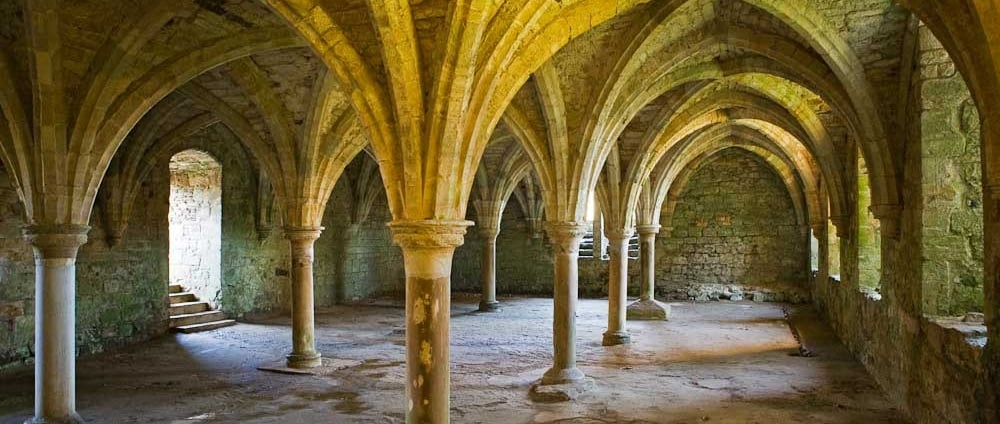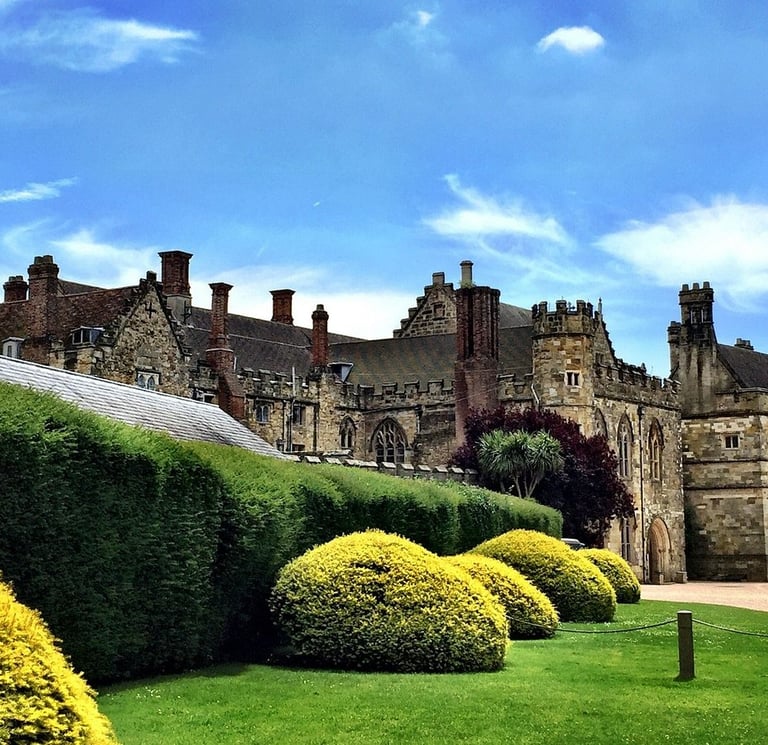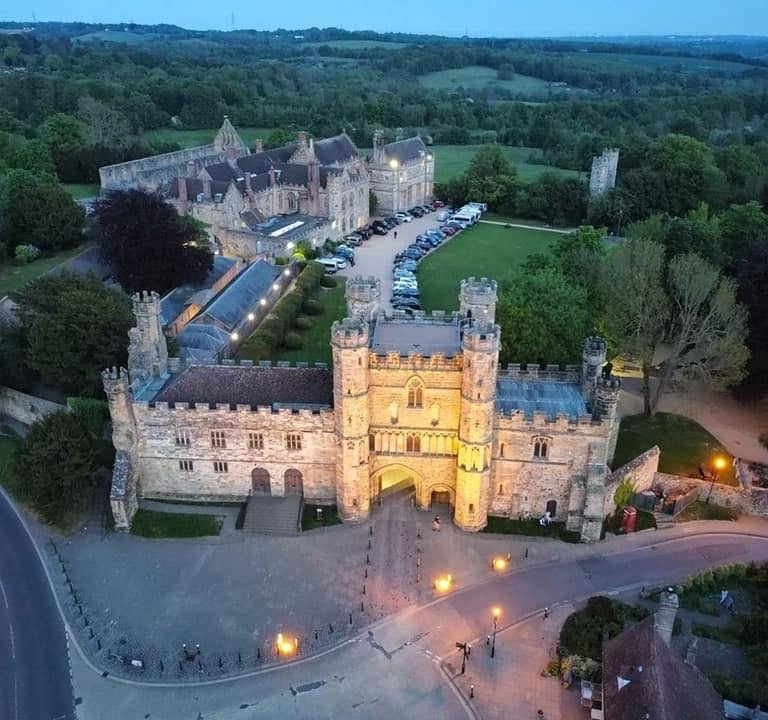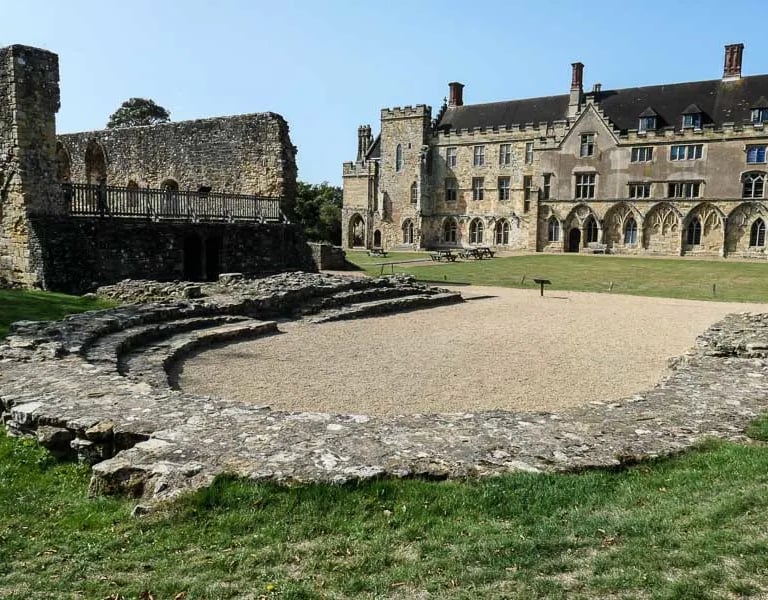Battle Abbey
PILGRIMAGE UK: HOLY PLACES


Battle Abbey stands as one of England’s most evocative historical sites—a partially ruined Benedictine abbey that, despite the ravages of time, continues to radiate the weight of history and a profound reverence for the past. Situated near the quaint town of Battle in East Sussex, this revered landmark was founded by William the Conqueror as an act of penance for the bloodshed at the Battle of Hastings in 1066. As you wander through its sacred grounds and explore the remnants of its once-mighty structure, you find yourself immersed in a narrative that intertwines medieval ambition, divine retribution, and the enduring beauty of the surrounding countryside.
Stepping onto the grounds of Battle Abbey is like opening a living history book. The abbey itself, though now largely in ruin, was once a glittering centre of religious and political power. William the Conqueror, determined to atone for the loss of life and to commemorate his victory, vowed to build a grandiose monastery on the very spot where King Harold fell. Although the abbey was never completed to its original design, its surviving walls and arches still speak eloquently of that ambitious vision. As you stand before the imposing gatehouse, you cannot help but reflect on the solemn purpose behind its construction—a desire to channel both penance and hope into stone and mortar.
The historical narrative of Battle Abbey is complemented by the natural splendour of its setting. The abbey is lovingly cradled by gently undulating fields and meandering hedgerows that stretch out into the East Sussex countryside. This harmony of man-made structure and raw nature invites a contemplative mood in the visitor. On clear days, panoramic views over the surrounding landscape reveal a patchwork of farmland interspersed with groves of trees and scattered rural hamlets. These scenic vistas not only provide a striking contrast to the weathered ruins but also serve as a reminder of the enduring relationship between England’s agricultural heritage and its storied past. It is in such moments of visual splendour that you truly appreciate how history can imbue the natural world with an air of timelessness.
Exploring the abbey ruins offers a sensory journey into the medieval world. As you meander along the overgrown paths, the sound of your footsteps on crumbling flint and the whisper of the wind through derelict arches become part of the experience. The stone remains, though battered by centuries of weather and neglect, retain intricate carvings and delicate tracery that suggest the skilled craftsmanship of their creators. In the silent corridors and shadowed cloisters, the ghostly impressions of chanting monks and bustling monastic life seem to linger. Every fragment of wall, every piece of moulded stone, forms a tapestry of memories—each element a testament to an era when devotion and discipline were interwoven into daily life.
Battle Abbey is much more than a relic of the Norman conquest; it is a living monument that connects the modern visitor with the multifaceted historical currents of England. A closer look at the structure reveals that it was more than just a site of penance—it became a key symbol of the transformative power of conquest and the subsequent reconciliation between victor and subject. Over the centuries, the abbey grounds have witnessed many changes: from the spiritual vigour of a flourishing monastery to the desolation following the Dissolution of the Monasteries in the 16th century. Despite the passage of time, the abbey’s ruins still offer a poignant narrative of regeneration and decay—a reminder that while human endeavours may crumble, the spirit of resilience endures.
Strolling through the precincts of Battle Abbey, you are struck not only by the grandeur of its historical past but also by the serene beauty of its present-day surroundings. The meticulously maintained pathways invite quiet reflection and leisurely strolls, allowing each visitor the opportunity to become absorbed in the ambience of the site. The abbey’s landscaped gardens, interspersed with colourful blooms and sturdy hedges, provide a tranquil setting where you can pause and meditate on the transience of human life and the timeless nature of faith. In the soft glow of late afternoon, as sunlight filters through the ancient trees and casts long shadows on the abbey’s ruins, the entire scene is imbued with a gentle, almost sacred light that seems to echo the whispered prayers of centuries gone by.
The interplay between the ruins and the natural environment creates a rare dialogue—one that invites comparisons between the vigorous ambitions of medieval builders and the inexorable, patient progression of nature. The crumbling walls of Battle Abbey, overtaken in places by creeping ivy and delicate wildflowers, stand as stark symbols of impermanence. Yet, this seeming desolation also offers a vivid illustration of renewal. Just as the abbey was erected to atone for the terrors of battle and to herald a new era of peace and order, so too do the natural elements reclaim and rejuvenate the site. The way the earth nurtures these ruins suggests that, even in decay, beauty and hope abound—a sentiment that resonates deeply with those who seek to find meaning and purpose through connection with the past.
Visiting Battle Abbey therefore becomes a deeply personal pilgrimage—one that invites introspection and dialogue between the heart and history. The space encourages each pilgrim to reflect on the sacrifices and triumphs of those who came before, and to consider the perennial cycle of creation and destruction that shapes all human endeavours. As you stand in the cool, shadowed centre of the abbey’s ruins, you cannot help but ponder the profound rituals of penance and redemption that once took place in this sacred ground. This is a place where the past is never truly past; rather, it lives on in the echoes of stone and the quiet murmurs of the countryside.
For many modern pilgrims, the journey to Battle Abbey is as much about the legacy of the Norman conquest as it is about the timeless quest for personal meaning. In the hushed stillness of the abbey, with its imposing archways and unyielding stone, you are invited to confront the tension between human ambition and the inexorable flow of time. It is an experience that transcends the mere factual recounting of history, offering instead a space for spiritual and emotional renewal. Here, the relentless passage of centuries is distilled into a moment of quiet clarity—a reminder that, even though empires fall and monuments crumble, the essence of hope and faith remains eternal.
In conclusion, Battle Abbey is not merely a historical site preserved for posterity; it is a dynamic, living landscape that speaks to the enduring spirit of humanity. The juxtaposition of its formidable ruins against the pastoral beauty of the East Sussex countryside creates an atmosphere where history and nature intertwine to awaken the soul. Whether you approach the abbey as a lover of history, a seeker of spiritual solace, or simply as one in search of a place to contemplate life’s fleeting moments, you will find that Battle Abbey offers a profound and uplifting journey. Here, amid the silent stones and the gentle murmur of the countryside, the legacy of the past is carried forward into the present with grace and dignity, inviting you to partake in a timeless dialogue between the ephemeral and the eternal.
Battle Abbey: A Journey Through History, Nature and the Passage of Time






Ancient Apostolic Catholic Church
Embracing faith, inclusion, and compassionate service together.
ST THOMAS AQUINAS SEMINARY
© 2025. All rights reserved
QUICK LINKS
